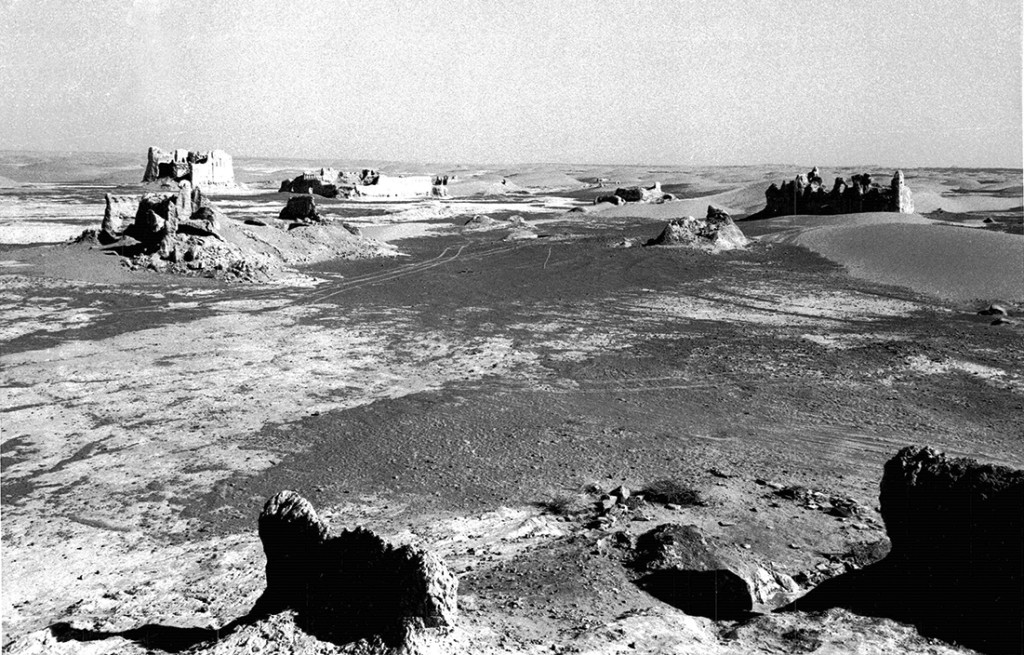Houses 183
Latitude: 30.56528264 Longitude: 62.0897956
Enlarged satellite view
This cluster of five elite Timurid period estates stretches along an east-west canal in Sar-o-Tar just south of Shahr-i Gholghola. Each was built in typical 15th century CE style around a courtyard. In 1974 four rooms from three houses were selected for limited excavations. The rooms are located along the east and west sides of the central courtyard of the houses and produced evidence that these rooms were multifunctional: living quarters for workers on the estate, industrial areas for food preparation and cooking, weaving, and other crafts, and as shelter for domestic animals. One room in House 183A contains a 1.3 m thick layer of animal dung, clearly signifying its use as an animal pen. There was evidence from wind and water deposition that these houses might have been occupied only seasonally for part of their active lifetime. In the excavated room of House 183B, numerous perishable objects were found—dyed cloth, rope, a wooden animal tether, blanket fragments, reed matting, and a wooden comb—things that are rarely preserved for 600 years in archaeological contexts. Numerous other household objects came out of the excavations including grindstones, metal tools, a millstone, spindle whorls, stone vessels, and glass. A hoard of coins, beads, copper jewelry, and other valuables was likely deliberately buried by one of the inhabitants.



